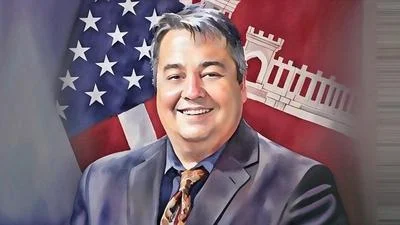WASHINGTON—Today the Bush Administration released the 2006 Report to the President and Congress on Coordination of Intellectual Property Enforcement and Protection. The report sets forth the actions and initiatives that the U.S. government has taken over the past year to combat the rising tide of global counterfeiting and piracy, and notes the importance of these efforts because of the critical role intellectual property (IP) plays in the country’s economic strength and the health and safety of consumers.
The report was produced by the National Intellectual Property Law Enforcement Coordination Council (NIPLECC). The Council brings together the leaders of the key federal government agencies responsible for intellectual property enforcement to support the Bush Administration’s efforts. The Council is composed of representatives from the Departments of Commerce, Homeland Security, Justice and State, the Office of the U.S. Trade Representative, and the U.S. Coordinator for International Intellectual Property Enforcement.
“Protecting the ideas and technology of U.S. businesses is a critical task, and it is clearly on the front burner for the Bush Administration. We are devoting more time and resources to keep the pressure on the bad guys,” said Commerce Secretary Carlos M. Gutierrez. “There is much we’ve achieved in the past year, but we cannot be satisfied. Complacency has no place in today’s global economy. So I look forward to working with businesses to keep America competitive in the years ahead.” “This report verifies our significant and substantial efforts to stem the tide of intellectual property theft,” said Attorney General Alberto Gonzales. “The Department of Justice is committed to working very closely with its partners as this Administration wages an unprecedented effort to crack down on the growing global trade in counterfeit and pirated goods.” “Whether it is referred to as counterfeiting, or piracy, or willful infringement of trademarks and copyrights, it all comes under the less elegant heading of stealing – pure and simple – and we must continue our efforts to stop it,” said U.S. Trade Representative Susan Schwab. “For the global trading system to work, producers and consumers in the United States and around the world must be confident the rules of the game are fair and evenly applied. This report underscores that the resources of the U.S. government are fully engaged in thwarting pirates, counterfeiters and thieves.” “Strong intellectual property protection and enforcement are essential for America's global competitiveness and the further growth of emerging knowledge economies in the developing world,” said Assistant Secretary of State for Economic and Business Affairs Dan Sullivan. “This report highlights the robust commitment of agencies across government to combating piracy and counterfeiting and to safeguarding American ideas, brands and inventions. The State Department is making a critical contribution to this work through its Office of International Intellectual Property Enforcement and its network of Embassies and consulates, which are advocating for U.S. right holders around the world.” Highlights of the 2006 report include: The Department of Homeland Security deployed an online recordation tool for rights holders to record their trademarks and copyrights with CBP. Recordation provides a higher level of protection for trademarks and copyrights and makes it easier for DHS to identify fake goods at our borders.
Pursuing Criminal Enterprises The Bush Administration is working with Congress to strengthen laws and penalties related to intellectual property rights enforcement.
Passage of the Stop Counterfeiting in Manufactured Goods Act, H.R. 32 (Enacted in March 2006) - Prohibits the trafficking of counterfeit labels, emblems, containers or similar labeling components that may be used to facilitate counterfeiting; provides for forfeiture of articles bearing or consisting of a counterfeit mark and proceeds of any property derived from proceeds of, or used in the commission of, a violation; expands the definition of "trafficking" for certain counterfeiting crimes and clarifying that trafficking in counterfeit goods or labels includes possession with intent to traffic in such items.
The Department of Justice is expanding its IP law enforcement attaché program to cover Asia and Eastern Europe.
The Department of Justice created five new Computer Hacking and Intellectual Property (CHIP) units in the U.S. Attorney’s Offices in Nashville, Orlando, Pittsburgh, Sacramento, and Washington D.C., bringing the total number of specialized units to 25. DOJ also increased the total number of CHIP prosecutors nationwide to 230.
In districts with CHIP units, the number of defendants charged with federal IP crimes climbed from 109 in FY2004 to 180 in FY2005 – a 65% increase.
Over the past 5 years, approximately half of all defendants convicted of federal intellectual property crimes in the United States received some amount of jail time.
Congressional Direction and Presidential Leadership Congress created the position of U.S. Coordinator for International Intellectual Property Enforcement to strengthen U.S. government coordination, revitalize the Council and provide renewed focus and leadership. In July 2005, President Bush appointed the first U.S. IPR Coordinator, Chris Israel, and created the Coordinator’s office within the Commerce Department to help lead his Administration’s ongoing commitment to IPR protection.
The Bush Administration’s Office of the U.S. Coordinator for International IP Enforcement works to leverage the capabilities and resources of the United States to promote effective, global enforcement of intellectual property rights. The Coordinator’s office leads inter-agency initiatives such as STOP! and outreach with the private sector and our international partners.
Demonstrating the Impact of Coordination China: The U.S. government is working on many fronts to engage China on IPR concerns and, under President Bush’s leadership, has developed a focused China IP strategy. The Bush Administration’s China IP strategy is built on five pillars: (1) bilateral engagement; (2) effective use of trade tools; (3) expanding law enforcement cooperation; (4) education and capacity building; and (5) working with the private sector. We are utilizing all of our resources to effectively implement and coordinate our approach.
El Salvador: The recent experience with CAFTA-DR is one example of different agencies working together to effect real change. U.S. free trade agreements, including CAFTA-DR, put in place cutting-edge protections for intellectual property rights with strong rules to combat counterfeiting and piracy. As part of El Salvador’s commitments under CAFTA-DR, USTR and other agencies worked with El Salvador on implementing legislation to enact a provision that requires authorities to act ex officio (under the inherent authority of their office) against piracy and counterfeiting. The Commerce Department’s Patent and Trademark Office conducted trainings in El Salvador on use of this new authority. El Salvadoran law enforcement, working with U.S. law enforcement officials (DHS), then used this new provision to conduct a series of raids that disrupted a major counterfeiting operation, resulting in the seizure of equipment, raw materials and DVDs.
Priorities for the Coming Year The Council is working to set objectives and establish priorities that will enable us to strengthen and better coordinate our education, training and capacity building activities around the world.
The Council is redoubling its efforts to work with U.S. industry to provide better resources and assistance to small businesses. It will explore the utilization of technology to protect IP and assure that U.S. enforcement efforts and activities are well coordinated with industry enforcement activities and priorities.
The Bush Administration is actively working with Congress to pass the Intellectual Property Protection Act of 2005. The Act is a comprehensive reform package that would toughen penalties for IP crimes, expand criminal IP protection, and add investigative tools for criminal and civil IPR enforcement.
Note: A copy of the full report is available here.
Source: U.S. Department of Commerce








